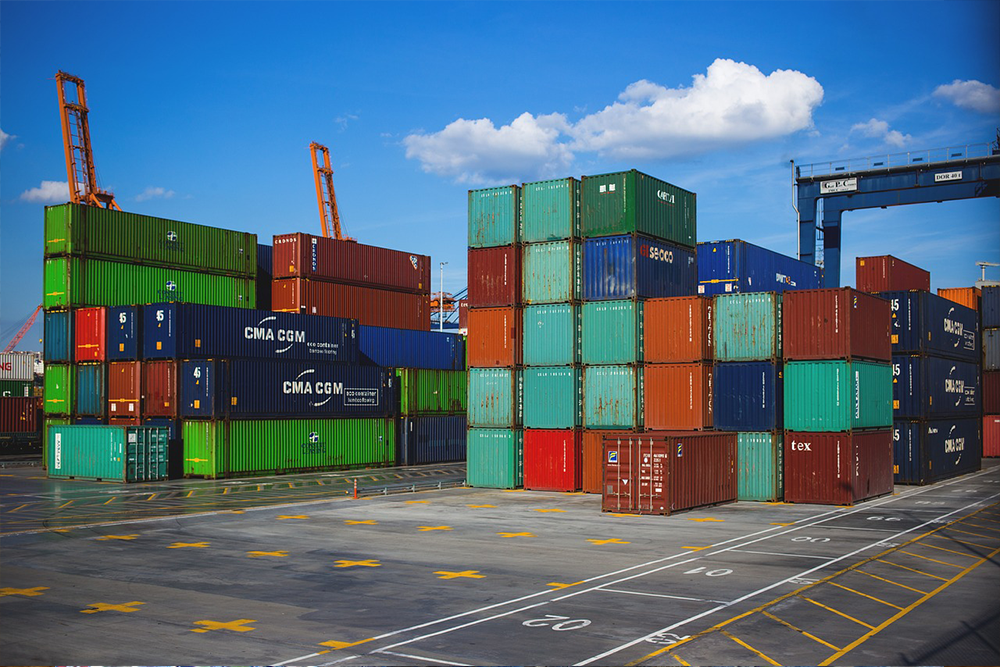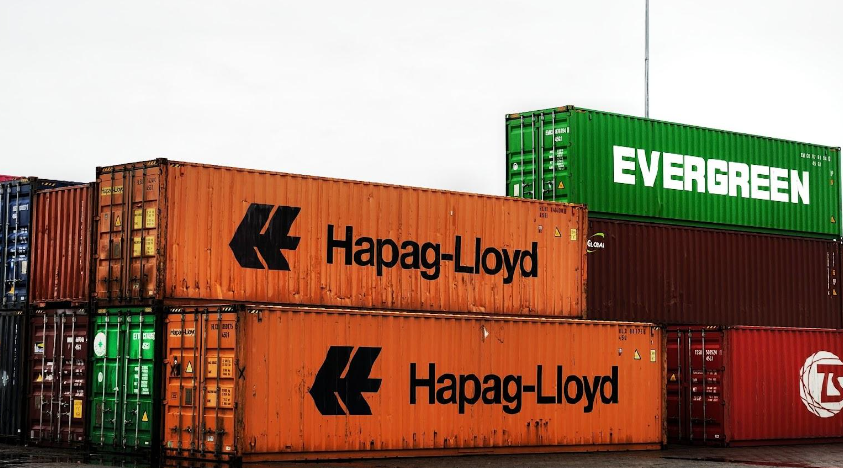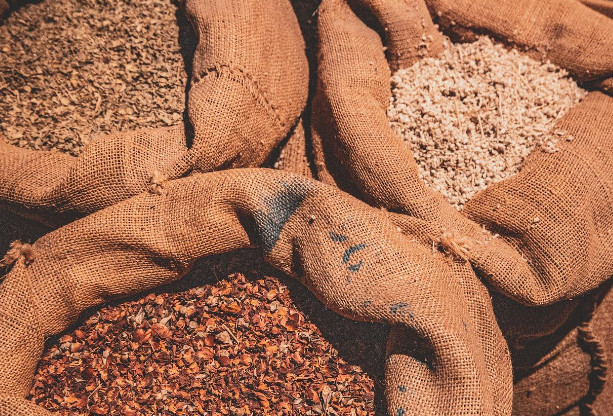
Shipping containers are a great way to transport large cargo across the world, but there are a lot of obstacles when it comes to bulk shipping. If you’re filling a shipping container with loose cargo, you have even more to worry about. Thankfully, container liners provide a simple solution when you need to ship bulk dry goods.
A bulk container liner allows you to ship bulk dry goods in a shipping container. There are different designs and styles to choose from, so you can find container liners that are perfect for your bulk shipping needs. A good container liner even makes it easier to load and unload cargo.
From coal and ores to agricultural products, tons of goods are shipped every day using bulk container liners. If bulk dry shipments are a regular part of your business, you need to choose the right container liner to protect your cargo. Check out the rest of this guide to learn more about shipping container liners and how EPGNA’s custom cargo solutions can help you safely transport your cargo.
Container liners, also called sea bulk liners or shipping liners, are exactly what they sound like. These liners are designed to fit inside a shipping container to act as a separate container for dry goods. When you’re shipping something loose and dry like grain, you can use a container liner to protect your cargo. Container liners also make it easier to load and unload bulk dry cargo, so you can save time and money on labor.
Bulk container liners fit on the inside of shipping containers and often have spouts that make them easy to unload. There’s also a spot to load your bulk dry goods at the top of the liner. Some container liners have a single spout for unloading while others have multiple spouts. You can choose between different materials, and there are even food-grade shipping container liners for things like sugar and grain.
If you’re shipping loose dry goods, you need something to put them in. Small quantities can be stored in jars and bags when they’re shipped, but bulk shipments present more obstacles. Container liners allow you to securely ship dry bulk cargo without worrying about spilling or contaminating anything.

Bulk container liners are an essential part of so many industries. Anyone who ships bulk dry goods like grain should use container liners to minimize losses and protect their product, and that covers a lot of products.
Agriculture is one of the main industries where container liners are used. From grain to seeds, there are tons of agricultural products that need to be shipped in bulk dry containers. These products aren’t just hard to ship because of their size — they also need to be protected from any potential contaminants. Using a bulk container liner is a simple way to protect seeds and grain from dirt while simplifying the loading and unloading process. With a simple top-loading system and bottom spout, it’s easy to load and unload large amounts of agricultural products.
Various minerals are also transported in bulk shipping containers with container liners. Things like sand and coal that are essentially in powder form need to be carefully transported, and shipping container liners are the best way to do that. Even salt is shipped inside a sea bulk container. Using a liner makes it easier to load fine materials into the top of the container and dispense them out of the bottom when it’s time to unload.
Aside from agricultural products and minerals, you can find all sorts of things in container liners throughout the world. People use container liners to ship things like chemicals, petrochemicals, various types of food, fertilizer and silica. Any product that comes in a powder or granule form in bulk quantities can be shipped with a bulk container liner.
There are several benefits of using container liners to ship bulk dry goods. The most obvious reason is to make it easier to ship large amounts of dry goods that would be difficult to transport otherwise.
There are several types of container liners that provide a range of benefits for different types of cargo. Check out this breakdown to learn more about which type of bulk liner container is right for your goods.
Bulk liners, also known as standard liners, are the shipping container liners that are used for transporting fine materials like grain and sand. These liners are designed to keep dust and moisture out of the goods that are being transported, and they usually have a top loading spout and a bottom dispensing spout. The spouts make it easy to load and unload products that come in granule or powder form. There are food-grade bulk container liners that are specifically designed for transporting food products, as well as several other types of bulk dry container liners.
Metalized liners are designed to protect against odors and moisture, but it’s not what you want if you’re transporting bulk dry cargo. These liners do provide a bit of insulation, but they’re not necessarily designed for transporting temperature-sensitive cargo. Durability and odor protection are two of the biggest benefits of metal liners, but they’re more of a niche type of container liner.
Safety container liners are similar to standard container liners, but they’re also designed for transporting heavy-duty cargo that could potentially damage shipping containers. Safety liners are especially durable because they’re designed to stand up to just about anything, which is why they’re great for heavy cargo. You can even find food-grade safety liners with spouts and other features that make it easy to transport bulk dry goods.
If you’re transporting temperature-sensitive cargo like food or pharmaceuticals, thermal liners are the way to go. Thermal liners feature multi-layer construction that includes insulation and a reflective lining, so you don’t have to worry about anything inside the shipping container getting damaged.
There are a lot of things that are shipped with thermal container liners, including food and beverages, medicine and chemicals. Some cargo can be spoiled if it’s exposed to extreme temperatures, but certain chemicals can pose a serious threat. Thermal container liners and pallet covers provide the crucial protection that keeps your temperature-sensitive cargo safe.
When you’re transporting sensitive cargo that doesn’t need a bulk container liner, barrier liners are an excellent choice. Barrier liners create a solid barrier between the shipping container and your cargo, which helps prevent contamination by keeping dirt and moisture out. Food-grade barrier liners are a great choice if you’re transporting food products that aren’t temperature-sensitive.
While barrier liners are affordable and easy to use, they’re not insulative and they’re not as tough as metalized or safety liners. As long as you’re shipping cargo that’s not too heavy and doesn’t need to be in a bulk container, barrier liners are a potential solution.
Thermal blankets aren’t actually container liners, but they do go inside shipping containers. Thermal blankets and thermal pallet covers are designed to go over the top of cargo on pallets to protect it from extreme temperatures. With a thermal blanket, you can ship temperature-sensitive cargo without a thermal liner.
Thermal pallet covers and blankets are used for all the same stuff you’d typically use thermal shipping container liners for. Pallets of food, wine, pharmaceuticals, chemicals and electronics are often covered with a thermal blanket before they’re shipped to protect them from extreme heat.

Choosing the right container liner is crucial if you want to protect your cargo, and it’s not as easy as picking the right liner type. There are a handful of features you want to look for to make sure you’re getting container liners you can trust. Check out some of the best features to look for below.
We already talked about some of the different types of container liners, and that’s the first thing you need to decide on. If you’re transporting grain, sand or any other granule or powder material, you need a bulk container liner that’s easy to load and unload. If you’re transporting food or medicine that’s sensitive to extreme temperatures, go with a thermal liner or thermal pallet cover.
Once you figure out what type of container liner you need, you can start looking at other features.
Container liners are made from lots of different materials, and choosing the right material is essential. Once you’ve narrowed down your search to a specific type of container liner, check out some of the pros and cons of the materials you’re seeing to figure out what’s best. Liners that are made from food-grade materials are good for food and beverages and other consumable products. If you’re looking for insulation to protect temperature-sensitive goods, you want an insulated container liner that has a reflective lining. There are also several types of plastic to choose from if you’re just looking for a basic container liner.
There’s no best container liner material for every situation — it all depends on your cargo. Figure out what you need and shop accordingly.
Durability is key when you’re spending money on container liners. You shouldn’t have to replace a bulk container liner after a few uses, and you don’t have to when you choose the right liner. Look for liners that are reasonably thick and made from durable materials polypropylene and polyethylene. Durable container liners help protect your cargo and save you money, both of which are important for your bottom line.
Every container liner is installed a little differently, so look for container liners that are specifically designed for easy installation and removal. If you’re planning on using container liners regularly, you don’t want to waste too much time setting them up.
Kratobag shipping container liners from EPGNA are easy to install, so you can start loading up your cargo as soon as possible. These container liners are also designed to protect shipping containers so you don’t have to deal with expensive shipping container cleaning fees.
If you’re going to ship food or medicine using container liners, you need to make sure you’re using liners that are FDA approved. Food-grade container liners are a must if you’re shipping any raw product that’s going to be consumed by people.
Keep in mind that there are lots of bulk dry goods you can ship without a food-grade container liner. If you’re shipping something like coal or silica, you don’t have to worry about people consuming a contaminated product because you used the wrong label.
Most container liners are specifically designed so they’re easy to install and remove, but installation can still take up to an hour. There are a few tips that can help you get everything set up right.
To start, it’s a lot easier to install a container liner if you have somebody to help you. There are a lot of individual steps, and some of those steps are much easier if you have somebody to help hold the liner or support pieces up while you work.
The specific installation instructions can vary quite a bit depending on the type of container liner you choose and the brand you choose. Make sure you follow any installation instructions the manufacturer provides. If you’re having trouble installing a container liner, some manufacturers have instructional videos on YouTube that can help you out.
When you’re installing a container liner, don’t skip any steps. Making sure everything is properly sealed and attached is a vital part of protecting your cargo, especially with a bulk container liner.

There are lots of little things you can do to protect dry bulk goods during the storage and shipping process.
Start with storage. Bulk dry goods should be stored in a secure container, but make sure they’re getting the airflow they need. Maintaining the right temperature is a big part of maintaining quality over time, so don’t store dry goods in direct sunlight or other extreme temperatures. Wherever you choose to store bulk dry goods, keep them away from any chemicals or other products that may contaminate them.
Once dry bulk shipments are on land, dry bulk trailers can get help you safely transport them where they need to go. If you’re receiving a dry bulk shipment and you need a way to transport it, make sure you find a suitable shipping company ahead of time so you’re not waiting around.
Certain types of dry bulk products — including food and medicine — have specific regulations and requirements when it comes to storage and transportation. If there are regulations that affect the dry goods you’re shipping, take the time to find shipping and storage solutions that comply with those regulations.
Container liners are an essential part of the shipping process, especially when it comes to bulk dry goods. Dry bulk shipments such as grain and sand are a lot easier to ship when you have a protective liner that’s easy to load and unload. When you simplify the shipping process, you also save money.
EPGNA can help you optimize your shipping process to save money and ensure the best product quality. Our Kratobag container liners offer reliable protection and easy operation, which means you save time and money. You can choose between the Kratobag 5100, 5000, or 4000. Contact EPGNA to learn more about our bulk container liners or get a free quote today.

Sandra Malouf is the President of Eurolog Packing Group and has spent her career focused on Industrial Packaging. With a proven track record of helping businesses avoid supply chain disruptions, Sandra’s visionary leadership elevates the industry. She’s committed to developing sustainable practices and continues to shape the future of industrial packaging by listening to the customer and offering unique solutions applicable to various industries across the world. The company’s main focus is temperature stabilization and moisture damage prevention in exports affected by extreme variations in global temperatures.
© 2025 Eurolog Packing Group